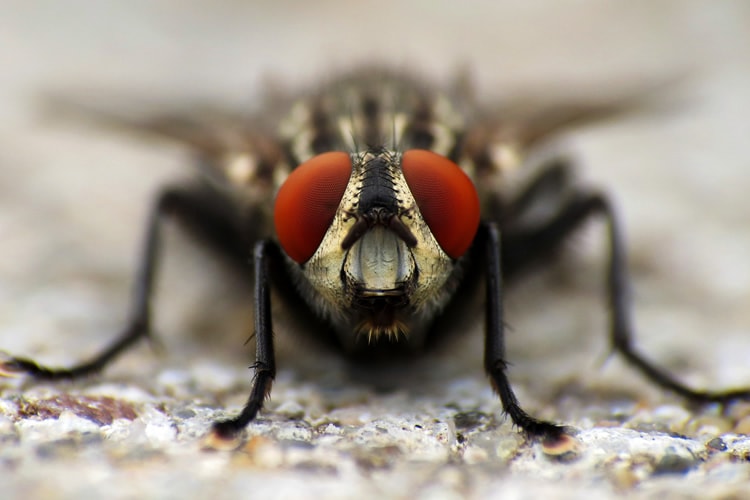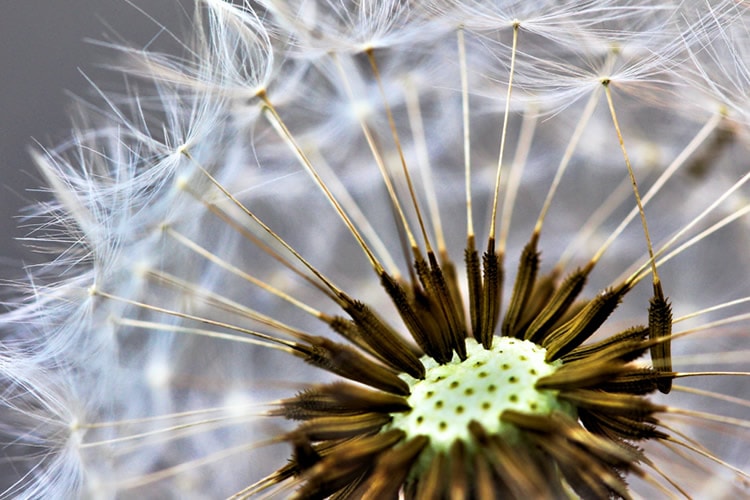Getting Creative With Macro Photography
We all love a good macro image, but photographing the same standard flowers and bees every summer can get a bit repetitive.
While flowers make excellent subjects, there are plenty of other photo opportunities just waiting to be had. Trying to capture new perspectives, and new subjects – in unexpected places is a great way to get some unique shots – or add a new spin to old favorites.

image by BrunoSchalch
If you’re stuck in a rut, the best way to get out of it is by trying something new. Getting creative with your macro images is one of the best ways to step up your macro photography. Here are some ideas to jumpstart your creativity.
Find New Subjects
If you find that you’re board of capturing the same subjects, try photographing something you wouldn’t normally shoot. If you look closely, you might be surprised at how many interesting details there are in everyday things just waiting to be captured.
Look for opportunities where you least expect them; rain-speckled feathers, interesting rocks, rusting metal, peeling paint, and common household items can all make great macro subjects. Many seemingly mundane objects look interesting up close. Make it your goal to shoot something that you’ve never seen in a macro image before.
Try a Different Composition
If your images feel dull and uninspired, look for new ways to compose your shots. Trying new compositional techniques can help to liven up your photos. For instance, you can try filling the frame with your subject, zooming in to eliminate any distractions in the background. You could use the rule of thirds for a more dynamic composition, or center your subject for a strong, imposing photo.
In compositions where the focal point isn’t immediately obvious, try to compose your shot using the compositional rules of leading lines and foreground interest to draw attention to your main point of interest.

image by Steven Depolo
Use a Flash
Natural light is usually best, but sometimes the situation calls for a bit more lighting. Using an external light source can help to bring out the finer details that would otherwise go unnoticed, allowing you to capture some creative images. The on-camera flash is in the wrong position for most macro photography since your lens is close to the subject, but the flash is at the top of the camera. An off-camera flashgun is a much better option for macro photography, allowing you to position it wherever you want.
In a pinch, a flashlight can also work to fill in the shadows and enhance your photos.
Shoot Through a Flower Petal
When photographing flowers, consider shooting through a petal or a leaf. This allows you to create a beautifully blurred foreground while still keeping the subject in focus, and will give your image a beautiful wash of color. To create this effect, position yourself so that a petal or leaf is in the foreground, in front of your subject.
Use a wide aperture like f/2.8 to blur the foreground out of focus into a transparent haze. Then, place your camera an inch away from the petal. The closer you position yourself, the more blurry it will become.
Just Add Water
Water droplets are great micro subjects. Look closely at a water drop on a leaf or flower petal – especially on a clear day, and you’ll often be able to see a “world within a world.” If you happen to be out on a sunny day with no raindrops – no worries, you can always create your own by misting your subject with a water bottle.
Create a Mini Landscape
Macro shots can create some interesting micro scenes! If you look closely, you’ll be able to spot opportunities to photograph mini landscapes. Look for potential scenes around puddles or small pools of water – the water will look like a still lake, and mounds of dirt, rocks, or tree roots can become hills.

image by Axel Naud
Pick a Room
One creative exercise that’s guaranteed to get you thinking outside of the box is to choose a room in the house to capture macro images in. The kitchen or garage are especially good options, full of intricate objects that look interesting up close. Give yourself half an hour to look for interesting textures, colors, and patterns, and watch as you start to see everyday objects in a whole new way.
Play With Your Food
Food can make surprisingly good macro subjects – especially fruit and vegetables. Cutting fruit and slicing vegetables to reveal the seeds inside makes then especially photogenic. Zooming in on a handful of nuts or seeds is another idea.
The key to great macro food shots is excellent lighting – so position yourself in front of a wide window or bring the food outside where there’s plenty of light before you start your shoot.
Use Colored Card for Clean Backgrounds
Some photographers bring along a piece of colored card or an assortment of different colors to place behind their minuscule subjects for an instant, simplified background. Experiment with different colors to find one that help your subject to look its best.
While insects and flowers are by far the most popular macro subjects, there are plenty of other macro opportunities to be found when you keep your eyes open and look – closely.
When you focus on part of the subject, rather than the whole, you’ll find opportunities for macro in lots of unexpected places, and will be able to capture some unique and exciting images.
Do you enjoy close-ups? We’d love to hear from you! Please share your close-up photography tips with us.
